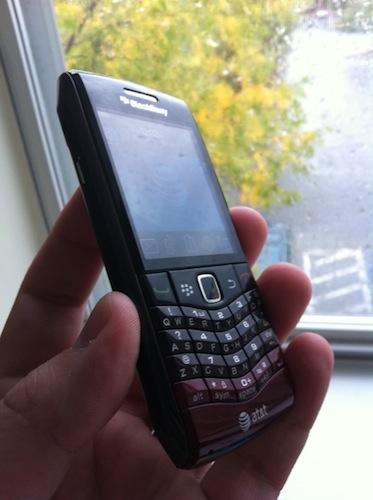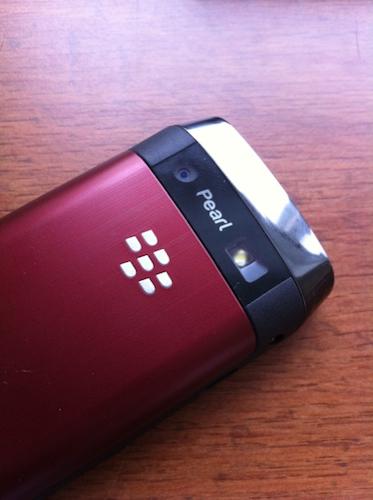
Announced at WES 2010 in April, the BlackBerry Pearl 3G is finally available on AT&T. Featuring a revamped design, 3G network connectivity, and some Wi-Fi goodness, the Pearl 3G is a much-needed refresh to RIM's Pearl product line.
I've spent a few days with the device, and here's what I've discovered thus far:
- As I noted in the unboxing video, the Pearl 3G ships in a small box and comes with an AC adapter module, USB cable, earbuds, and a 2 GB microSD card.
- The phone is thinner than its predecessor, though the Pearl 8110 holds a 0.1 ounce advantage in the weight department. The curves, chrome beveled edges, rubberized sides, and battery door all resemble the BlackBerry Storm 2. I like the updated design - it makes it less "boxy" and it fits in with RIM's current design scheme.
- Despite rumors that AT&T would launch the Pearl 3G in several colors, It's only available in "gradient red" at the moment. Black and red colors on the front, with a red battery door. I don't care for the two-toned look on the front of the phone (I'd go with solid black, if I had the choice), but it's unique.
- The Pearl 3G swaps out the trackball for RIM's new trackpad, and there's something wrong with mine. From time to time, it moves around and does all kinds of crazy stuff on its own. At one point, I had to stop using the device, as it was "correcting" my words (incorrectly) and scrolling continuously. I'm operating on the assumption that it's a one-time manufacturing flaw, but it's unpredictable and frustrating. I tried to shoot video of it and it stopped, leading me to believe that it's an issue with the light sensor.

- The Pearl 3G is running BlackBerry OS 5.0.0.921 - in other words, NOT BlackBerry 6. The good news? The BlackBerry Pearl 3G is upgradeable to BlackBerry 6 (see my pictures from DEVCON), though there's no known release date at this time.
- AT&T's BlackBerry Pearl 3G is the 9100, so it offers a SureType keyboard. The keys have been redesigned a bit, and they're comfortable. It took me a bit of time to reacquaint myself to SureType, but after a few hours, I was pecking with ease. I prefer SureType, but I'll be curious to see if AT&T launches the 9105 (numeric keypad version) to appeal to two demographics.
- The phone has a 3.2-megapixel shooter with a flash. I used it for a few pictures over the weekend, and was largely unimpressed.
- In the past, BlackBerry devices required a battery charge of at least 15 percent before allowing for network connectivity. If the device died, you had to charge it for 10-15 minutes before you could utilize it again. The Pearl 3G is the first OS 5.0-equipped BlackBerry device I've worked with (unless I'm forgetting one) that provides instant network connectivity when the battery dies. It was a common frustration for BlackBerry users, so it's nice to see that they're moving past it.

- On that note, battery life has been exceptional thus far. I charged it Friday afternoon, and with light use throughout the weekend - an hour of phone calls, light text messaging, use of BlackBerry Messenger, and some casual web browsing - the battery died on Sunday evening. On battery life alone, it's a far better experience than sone high-end smartphones, though the tradeoff comes in the smaller screen.
- Call quality and reception have been good. I put the speakerphone to the test while traveling last week, and was pleased with how loud it was. The 3G data speeds seemed to be strong, though I haven't done any formal testing yet.
The Pearl 3G is RIM's consumer-level device, and the design updates and connectivity improvements are welcome additions to the Pearl product line. That said, AT&T's pricing baffles me. $149.99 on contract is reasonable (though I would have preferred a $99.99 price point), but a $549.99 full retail price is too high. The Torch 9800, which offers a stronger feature set, is $499.99.
Check out Taylor's full Blackberry Curve 3G review!


